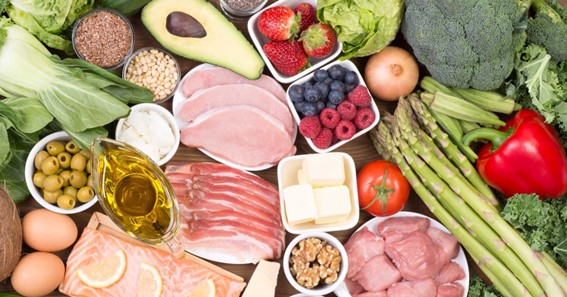Diabetes is a condition wherein the individual is unable to self-regulate their blood sugar levels. This requires constant monitoring with the aid of a sugar testing machine. It also creates particular challenges in terms of what foods can be consumed. If you have diabetes and are wondering about the foods you can include in your diet, then planning a diabetic diet chart is the best course of action.
So what foods should you include in this chart? There is a consensus on the foods that are best for people with diabetes. This article explores seven superfoods that will make a fine entry into your diet chart. From leafy greens to protein, these foods can help regulate blood sugar levels and provide other health benefits. So for those looking to make some dietary changes, be sure to include these seven staples!
The best dietary course of action
Before jumping to the actual list, it’s vital to understand which types of foods are optimal for those who have diabetes. In essence, the goal here is to keep the blood sugar levels as stable as possible. To this end, the first thing to understand is that carbohydrates — especially simple carbohydrates — are quickly absorbed in the blood, leading to a quick spike in blood sugar levels. Whether a particular carbohydrate food source is optimal or not can be determined based on the glycemic index, denoted as GI. Opting for foods low in glycemic index is always recommended for those with diabetes. With this basic understanding out of the way, here are the seven foods that need to be added to a diabetic diet chart.
Whole grains
People with diabetes need to include whole grains because they are a good source of fibre. Fibre helps keep blood sugar levels under control and can also help reduce cholesterol levels. Whole grains contain other nutrients that are important for good health, including vitamins, minerals, and antioxidants. Some good choices of whole-grain foods include oatmeal, brown rice, whole wheat bread, and quinoa. Lastly, they are also absorbed slowly in the blood due to their relatively low GI when compared to simple carbs. Watch the blood glucose levels drop in your sugar testing machine after you add whole grains to your diet.
Green leafy vegetables
Green leafy vegetables are an excellent source of vitamins and minerals, including iron, calcium, and folate. They are also a good source of fibre and antioxidants. Thanks to their nutrient content, green leafy vegetables are recommended in nearly every diet geared towards individuals with diabetes.
Some of the best green leafy vegetables to include in a diabetic diet chart are spinach, kale, collards, Swiss chard, and turnip greens. These vegetables are all low in glycemic index and will help regulate blood sugar levels. Including them in a diabetic diet chart will help improve overall health and well-being.
Milk and dairy products
Milk and dairy products are an important part of a diabetic diet chart. They provide essential nutrients like calcium, phosphorus, and vitamin D, which are necessary for maintaining healthy bones and teeth. They also contain protein and carbohydrates, which can help regulate blood sugar levels.
Some research suggests that consuming milk and dairy products may also help prevent type 2 diabetes. One study showed that people who consumed the most dairy had a lower risk of developing the condition than those who consumed the least. So, if you’re looking to create an actionable diet chart for diabetes, be sure to include milk and dairy products in the list of essential foods.
Cinnamon
If you’re looking to spice up your diabetes diet chart, consider adding cinnamon to the mix. This flavorful spice has been shown to help regulate blood sugar levels, making it a superfood for those with diabetes. Cinnamon can be used in many different dishes so get creative and see how this spice can work wonders for you.
Eggs
When it comes to diabetes, eggs are one of the best foods to eat. They’re packed with protein and nutrients. Moreover, they’re also low in carbs, making them perfect for diabetes as well as weight management.
Eggs are a great source of choline, which is an important nutrient for people with diabetes. Choline helps keep normal range for random blood sugar levels stable and lowers the risk of developing insulin resistance. Additionally, eggs are versatile and easy to prepare. Scramble them, fry them, or make an omelette, the options are practically endless. One can also add some veggies to an egg dish for even more nutritional value.
Lean Meats/Pulses/Legumes
People with diabetes need to include lean meats, pulses, and legumes in their diet. These foods are excellent sources of protein and essential nutrients, and they can help regulate blood sugar levels. Lean meats such as chicken, turkey, and fish are low in fat and calories, making them an ideal choice for people with diabetes.
If you’re vegetarian or vegan, pulses and legumes such as beans, lentils, and peas can be a perfect replacement. They are also low in fat and calories, and they are a good source of fibre. Fibre helps slow the absorption of sugar into the bloodstream, which can help to control blood sugar levels.
Tender coconut water
Tender coconut water is an excellent beverage for diabetic individuals. It is rich in potassium, which helps regulate blood sugar levels, and is a natural source of fibre, which helps keep your digestive system healthy. Coconut water also contains a unique type of fat that helps prevent insulin resistance.
To sum it up
In essence, a diabetic diet chart should include seven essential foods: whole grains, fruits, vegetables, lean proteins, low-fat dairy, healthy fats, and herbs and spices. Each of these foods plays an important role in managing diabetes by helping regulate blood sugar levels. Once included, you can empirically see your blood sugar levels drop on the sugar testing machine. By including all seven of these foods in a diet plan, you can keep your blood sugar levels under control and improve your overall health.





